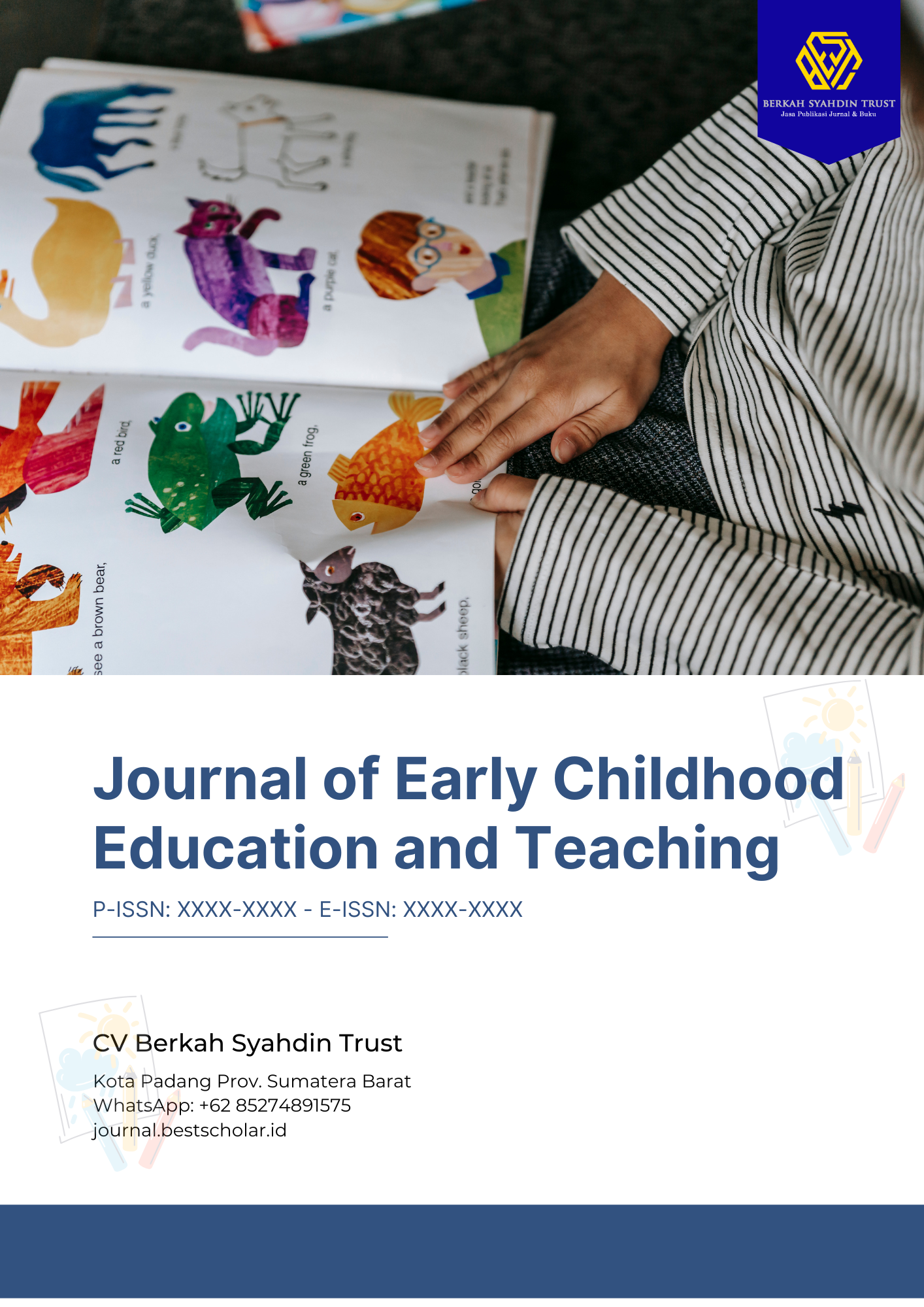Development of Interactive Smart Poster Media for Sexual Education Introduction to Children Aged 5–6 Years
Abstract
Purpose – A lack of interactive and developmentally appropriate educational tools has limited young children's understanding of basic sexual education. This study aims to develop an interactive smart poster as a responsive educational medium tailored for children aged 5–6 years to introduce foundational concepts of sexual education in an engaging and age-appropriate manner.
Method – This research employed a Research and Development (R&D) design using the 4D model (Define, Design, Develop, Disseminate) by Thiagarajan, focusing on the development phase. Data were gathered through expert validation and practitioner assessments using standardized instruments to evaluate media validity and practicality. Validity assessments included aspects of visual design, language clarity, and media functionality. Practicality was measured based on the content’s relevance and its applicability in early childhood classroom settings. The instruments were reviewed by two content experts and two early childhood educators.
Findings – The interactive smart poster achieved a validity score of 90.59%, indicating a high level of validity, and a practicality score of 90.71%, denoting high practicality. These results support the media’s suitability and potential effectiveness in introducing basic sexual education concepts to young learners.
Research implications/limitations – The study is limited to the developmental stage and initial feasibility testing. Future studies should explore the long-term impact, scalability, and integration of the smart poster into diverse educational contexts.
Originality/value – This study offers an innovative approach by integrating responsive visual media into early childhood sexual education. The use of smart posters represents a novel contribution to pedagogical tools aimed at fostering early awareness in a safe, engaging, and developmentally appropriate manner.
Full text article
References
Arifudin, O. (2016). Media pembelajaran anak usia dini. Yogyakarta: Deepublish.
Faliyandra, F. (2019). Tri pusat kecerdasan. Pekanbaru: Lembaga Rumah Cerdas Indonesia.
Humas KPAI. (2024). Paparan konten pornografi dapat menyebabkan anak terlibat dalam kekerasan seksual. Retrieved from https://www.kpai.go.id/publikasi/paparan-konten-pornografi-dapat-menyebabkan-anak-terlibat-dalam-kekerasan-seksual
Salma, S. (2024). Pengembangan poster edukasi dalam memahami pengetahuan seks pada anak usia 5–6 tahun di Sekayu. Jurnal Obsesi: Jurnal Pendidikan Anak Usia Dini, 8(1), 148–156. https://doi.org/10.31004/obsesi.v8i1.243
Saputro, B. (2017). Manajemen penelitian pengembangan (Research & Development) bagi penyusun tesis dan disertasi. Yogyakarta: Aswaja Presindo.
Suciani, R., & Westhisi, S. M. (2023). Pengenalan kosakata bahasa Sunda anak usia dini melalui media poster. CERIA (Cerdas Energik Responsif Inovatif Adaptif), 6(4), 464–468.
Sugiyono. (2013). Metode penelitian kuantitatif, kualitatif, dan R&D. Bandung: Alfabeta.
Sugiantara, I. P., Listarni, N. M., & Pratama, K. (2024). Urgensi pengembangan media pembelajaran lingkaran untuk meningkatkan hasil belajar siswa. Jurnal Literasi Digital, 4(1), 73–80. https://doi.org/10.54065/jld.4.1.2024.448
Sudjana, N. (2010). Penilaian hasil proses belajar mengajar. Bandung: Remaja Rosdakarya.
Syofiyanti, D. (2024). Perkembangan anak usia dini (Ditinjau dari beberapa aspek). Padang: CV DOTPLUS Publisher.
Tampubolon, G. N., Nurani, Y., & Meilani, S. M. (2019). Pengembangan buku pendidikan seksual anak usia 1–3 tahun. Jurnal Obsesi, 3(2), 321–328. https://doi.org/10.31004/obsesi.v3i2.243
Widyastuti, L., Khasanah, I., Rakhmawati, E., & Prasetyo, A. (2023). Pengenalan pendidikan seksual melalui media audio-visual pada anak usia 5–6 tahun. PAUDIA: Jurnal Penelitian dalam Bidang Pendidikan Anak Usia Dini, 12(2), 351–357. https://doi.org/10.26877/paudia.v12i2.17568
Authors
Copyright (c) 2025 Salsya Iffana Syaharra

This work is licensed under a Creative Commons Attribution-ShareAlike 4.0 International License.

